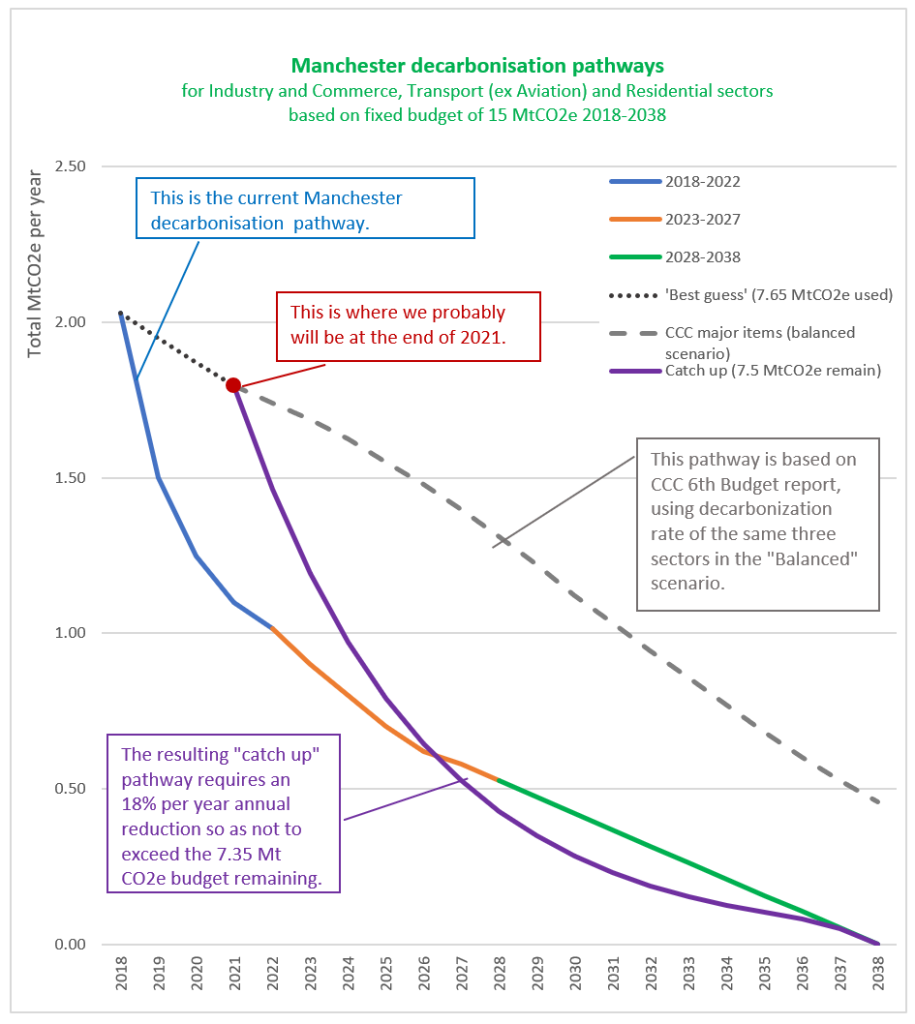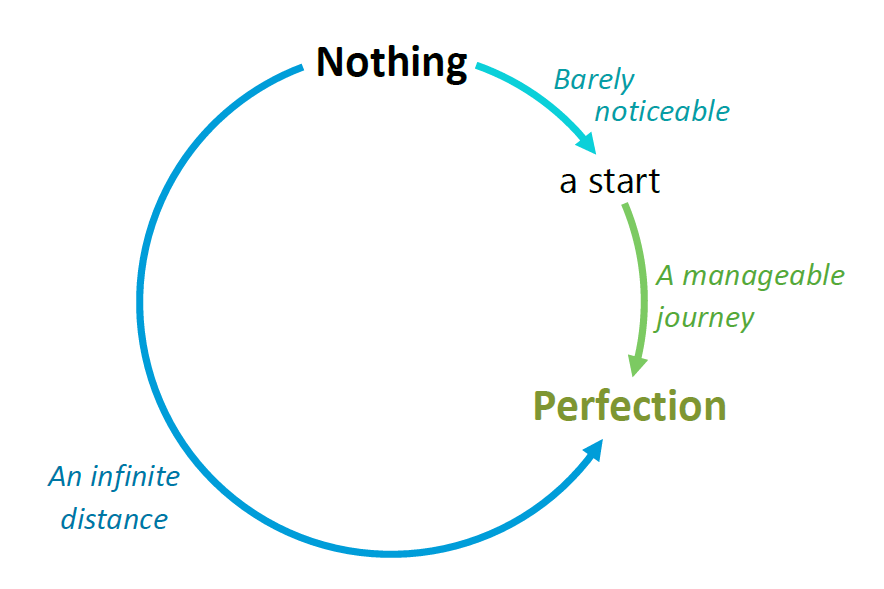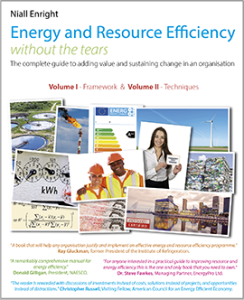In the week where the IPCC has issued its Sixth Assessment Report (AR6) which contains its starkest warning yet[1] about the risks from climate change and the urgency for action, I find myself thinking back to recent job application I was unsuccessful at.
I should point out that I am not really looking for a full-time role at this point. However, the job in question was for Director of the Manchester Climate Change Agency which has intrigued me ever since it was advertised at the back end of last year.
With the re-advertisement of the role, I thought a lot about how one might facilitate a process of decarbonization at a city-wide level and I did some background research on the Agency. In particular, I very much agreed with the Agency’s partnership approach, rather than a top-down or command-and-control style. So I threw my hat into the ring for the job. I should point out that I did have also some very considerable misgivings, which I intended to raise in the interview process, if I ever got that far.
As it happens, I was shortlisted for the role and asked to produce a paper covering how I would approach the first 100 days in the role, what I thought of the targets and my leadership approach. You can see my submission here [2], if you are interested, there is nothing confidential about it.
I put some effort into the document, which I very much enjoyed, especially since there was a strict limit on the wordcount which I always find challenging! Right from the outset I decided that I should be completely honest about two aspects in the Agency’s approach which concerned me, and so I took the opportunity to explore these in the assessment. The two areas were:
- The unattainable targets set by the Agency.
- The limited scope of the Agency, encompassing Manchester City Council rather than Greater Manchester.
The response to my submission was a brief email: “We regret that you have not been selected for the next stage in the recruitment process, and your application has not been successful.” Now, I must emphasize here that the purpose of this article is not to have a dig at the Manchester Climate Change Agency, or to complain about my application not being taken to the next step. I did say in my submission that I thought that their short term targets were unattainable and the long-term target improbable, which are pretty good grounds for dropping me! I wish them the best with their recruitment for the role. They are a fantastic organization with a very important and laudable mission.
The purpose of this article is to explore some of the wider strategic issues around large-scale decarbonization “where the rubber hits the road”, using the example of the MCCA job as a case-study. The detail around the job application is there merely by way of explanation of how I got “into the weeds”, so as to speak, of the MCCA targets and scope of operation. I think that there may be some useful general lessons to be drawn from my thinking, which may be of interest to the the MCCA or similar organizations.
Targets
Let’s start by talking about targets. The MCCA have a target based on absolute carbon budget of 15.4 Million tonnes of CO2e between 2018 and 2038. This is very much following on from Kevin Anderson and the Tyndall Centre’s approach which I have commented on before on LinkedIn. Now I did some analysis around that target, shown in the chart below, taken from my submission to the interview panel.

The MCCA target requires halving emissions from 2 MtCO2e per year to 1 MtCO2e in the five years between 2018 and 2022, inclusive (a total budget of around 7 MtCO2e , the blue line) and then halving again from 2023 to 2028 (orange) and then getting to zero by 2038 (green). If you look at the chart above, my best estimate on where Manchester City’s emissions will be at the end of 2021 is somewhere around 1.8 MtCO2e per year, with around half, 7.6 MtCO2e of the total 15 MtCO2e, carbon budget already spent, with the remainder likely to be completely spent by the end of 2026.
The deep purple line on the chart is my calculation of the resulting “catch up” target needed to stay within the remaining 7.4 MtCO2e available. If we convert that into a rate, it equates to 18% per year improvement every year for 26 years, or put another way, halving Manchester City’s emissions in the next three years.
For comparison I have added the “balanced pathway” for Zero Emissions produced by the UK Committee on Climate Change’s 6th Carbon Budget [3], the grey dashed line. This represents a “do-able”, albeit somewhat stretching, series of actions that will get us to close to zero emissions by 2050, 12 years after the MCCA target.
I am usually accused of being an optimist not a pessimist, but I cannot see any practical way that the kind of deep reduction needed in the “catch up” pathway to meet the MCCA targets can be achieved in the timescales set out. I’m not saying that Kevin Anderson or his colleague Christopher Jones from the Tyndall Centre are wrong about the limits on carbon emissions needed to achieve less than 1.5 C warming, just that I fear that these emissions budgets are not a sensible basis for a plan.
There are simply not enough heating engineers, plumbers, insulation layers, electricians, roofers, PV installers, tree planters, etc. to deliver that rate of change; there are not enough empty properties to move folks into while their homes receive the “deep retrofit” needed; neither the City nor the government currently have the authority or mandate to force through such a change; the construction product supply chain is already stretched by Brexit barriers and post lockdown demand for home improvements; battery electric vehicle production is severely curtailed by the lack of microprocessors; the money is not available; the electricity grid will probably need substantial reinforcement to service all those new heat pumps and electric cars…. should I continue?
Those of you who have seen my textbook on energy and resource efficiency (available free here) [4] will know that I place a great deal of importance on target-setting. I am, at heart, a managerialist who believes that “if you can’t measure it you can’t manage it”. I know, from experience in hundreds of efficiency projects, that inappropriate targets will demotivate, distort behaviors or prevent action. There are loads of examples in the book.
If I had been made the Director, I couldn’t, in all conscience, turn to the staff at the MCCA or the Partners and say to them:
“we will miss our 2022 target, but don’t worry we can get on track for our 2028 goal“
because I don’t think that goal can be met either. Which is why I faced that issue head-on in my submission, fully aware that it might not help my application!
I wonder how the staff at the MCCA are feeling now, knowing as they probably do, that the targets their organization has set are unachievable? Do they see the purpose of the target as a reminder that we are woefully slow to respond to the climate emergency – if so how does that help recruit and enthuse partners on the journey to NetZero? Does the target reflect naivete on the part of the management team – won’t that undermine credibility and confidence with funders, partners and the public? Are they oblivious of the gap – despite the target being woven so strongly through all the documents the Agency produce?
That is why I am worried about the MCCA target. At best it smacks a bit of a self-indulgent we “know best” approach, or possible it demonstrates an underlying lack of analytic rigor or, at worst, it, deliberately or otherwise, plays into a “we’re doomed” mindset. There must be dozens of city decarbonization programs up and running and I hope that they don’t all adopt a similar approach to target-setting.
This is important because one of the common tactics used by groups that want to avoid action on climate change is to paralyze us with fear. “If the problem is as bad as you say it is, then its too late and there is nothing at all we can do about it”. This tactic has a name: climate defeatism. As the reality of climate change has become increasingly impossible to dismiss, in part because it has reached the point where people can actually see and feel the changes for themselves, the denialists have modified their tactics. Many of them have stopped saying climate change is not real and instead now focus on telling us why just about any solution we offer is not practical. In climate defeatism, information about the extent, severity and consequences of climate change is turned against the person arguing for action. It reminds me of the Japanese martial art, jiujitsu, where the defender uses the weight and strength of their adversary to defeat them. Depending on the context, the denialists will argue that we are just individuals/one business/a small country and our efforts are insignificant compared to the size of the problem. Their intention is to make us feel powerless, inadequate and overwhelmed by the subject. Fear has a greater tendency to freeze us than to mobilize us.
Of course we have a fine line to tread. Folks like the Extinction Rebellion do us a great service by ringing the alarm on climate change, as do the scientists who volunteer their time to produce the authoritative and scary AR6 report and the kids who run the School Strike for the Climate who so effectively prick our conscience about our obligations to their generation. Bravo!
I am not seeking to minimize the urgency of our situation or to sugar-coat the messages around climate change. It is just that, in my not inconsiderable experience, despair and failure are not good starting points for any enterprise, especially one where we need to persuade folks to join us. And I am not alone in the viewpoint [5] that we should remain strong and positive in the face of the challenge ahead of us. What most scientists agree is that we need to act urgently, and that reducing emissions by half by 2030 is the short-term priority.
In my opinion the MCCA should now focus on telling folks what it will do to achieve a 50% emissions reduction by 2030. This is still very much a stretch target, but much more deliverable than the current goals. The MCCA would also need to have some interim goals so that progress can be measured and monitored and resources focused effectively. I should point out that there is good news if such a target were to be set, since the Committee for Climate Change expect that renewable electricity will rise from around 35% of the mix to 80% by 2030, providing a substantial justification to switch transport and heat away from fossil fuels to electricity and making a commitment to a 50% improvement much less daunting for the Agency’s Partners.
Some folks may think that this is acquiescing to a slower less effective 2050 Net Zero target, but that is most definitely not the case. As we approach 2025, 2030, 2035 we will be in a position to reassess and put our feet down harder on the accelerator. New technologies will be available, finance will have woken up to the risks and opportunities. As the public’s and politician’s world views converge more closely with that of the scientists, greater ambition will be possible, and that greater ambition will take place against the backdrop of an MCCA already heavily engaged in the transition. We should think of the process we are involved in as a marathon, not a sprint – we need to set off at a fast pace, but the journey is long and we know we will need to increase the tempo as we proceed. By setting a 50% by 2030 target we are not abandoning the notion of achieving zero emissions earlier than 2050, we are simply getting ourselves started on the journey in a much more effective way.
A target represents the priority organizations and individuals place on change, it is the way the discussion around change is “framed”, it is the basis for the allocation of resources (people and money), it is the means by which progress is measured and tactics are refined. The target is the greatest source of motivation and engagement available to us.
A 50% by 2030 target will focus minds precisely because it is doable”.
I would urge the MCCA to ask all Partners to examine how they can support that target. Partner should look internally at what they can do to cut their emissions by half over the next eight years. The Agency could provide training for Partner “Champions” around setting such a target, can advise on how decarbonisation of electricity can make the challenge easier or may even wish to provide professional support from folks like the Growth Hub team to ensure that the Partner’s plans are technically sound. In other words the Agency can become the center of expertise to help ensure that the Partner’s plans are well informed and they are motivated to rise to the challenge. The Partners can also tell the Agency what constraints they might face which the Agency might help resolve, as well as what actions are immediate and which will take longer so that an overall picture can be developed for Manchester’s decarbonization journey.
By working with the Partners to plan on how they would meet a “50% by 2030 challenge”, the Agency will have a long list of specific, measurable actions folks have said they will do, against which resources can be allocated and progress measured. The common goal should help bind together the Partners and the Agency. Most importantly, the delivery of the initial actions will give everyone involved the chance to celebrate success.
The Agency need to show folks they can be successful, in order to be successful. That is the way change happens. It’s a sort of chicken-and-egg thing. The key to change isn’t the crazy leader with the zany vision, it is the first follower and the second follower and the third who accept the vision and jump on board to make it a success. Those followers will be drawn from a wide range of organizations with a wide range of perspectives – so let’s not put them off by asking them to buy into a patently unrealistic program.
Folks will be drawn to visible success. I would frame the call to action around success:
“We want you to commit to the most important and valuable change your organization will ever make.
We want you to put a plan in place to reduce your emissions by half by 2030.
We expect this plan to be realistic, add value to your organization and to position you more strongly for the future.
Our role is to help you make this commitment a success for you, for Manchester and for future generations.”
Whatever target is set, it will need to be broken down into dozens or even hundreds of discrete actions so that they can be assessed for their impact and prioritized appropriately. In Chapter 6 of my book I talk about immediate actions which Optimize, i.e. improve what we have now, such as turning down the thermostat on our central heating systems, then actions to Modify such as putting thermostatic radiator valves on all our radiators (or, better still, a zoning system like the Honeywell Evo system I have at home), and finally, longer-term actions which Transform,such as replacing our gas boiler with a heat pump. All these actions are complementary, in other words the lower temperature on the thermostat, only heating rooms that need it and replacing the boiler can all work together, so our investment and effort in one area is not wasted, even though the initial actions are not sufficient to achieve the desired change on its own. Indeed it would be crazy to jump straight to a boiler replacement program if we haven’t started with insulation and better controls to reduce the demand so that the boiler we fit is appropriately sized for the heat demand. It’s simple energy efficiency 101.
Although they have different timescales, we need to start working on Optimize, Modify and Transform actions immediately, but we should not necessarily expect Transform to deliver change quickly (after all most boilers will only be replaced at the end of their lives and, for the greatest savings at the lowest costs, we need to do the Optimize and Modify bits first).

This is the benefit of getting the Partners to set a plan to 2030. We can break down the target into a number of interim goals and set realistic expectations all-around.
Another very important aspect of target setting is understanding, with some precision, exactly how much of the target you can deliver through your own actions and how much will come from the actions of others. This is a critical step in maintaining motivation, focus and measuring progress. For example, a big part of the “50% by 2030” goal will be delivered by the energy suppliers of Partners reducing the emissions per kWh of electricity or gas delivered to them. In a typical office setting, for example, the decarbonisation of energy supplies alone could produce a 50% emissions reduction assuming a typical mix of gas and electricity use, so Partners with offices can commit to an even greater target should they wish to, or focus their resources on things like transport which are more difficult. Knowing that they are not expected to meet the 50% reduction through their actions alone will make Partners much more confident about signing up to an improvement target.
By setting targets based on things people and organizations can influence we will arrive at what is known in the jargon as SMARTER targets (specific, measurable, achievable, realistic, timely, ethical and reasonable).
While there is an enormous emphasis in the MCCA around engaging individuals and organizations, most folks would be surprised to hear that, according to the International Energy Agency ([6] page 67)
“just under 40% of emissions reductions result from the adoption of low‐carbon technologies that require massive policy support and investment but little direct engagement from citizens or consumers, e.g. technologies in electricity generation or steel production.
A further 55% of emissions reductions require a mixture of the deployment of low‐carbon technologies and the active involvement or engagement of citizens and consumers, e.g. installing a solar water heater or buying an EV.
A final 8% of emissions reductions stem from behavioural changes and materials efficiency gains that reduce energy demand, e.g. flying less for business purposes”.
So only a small proportion of the change required is entirely in the hands of citizens – most changes are at a system or technology level and require political or financial drivers to achieve. Clearly to maximize impact, the MCCA should focus on the latter two categories of improvement not the former, reiterating my earlier point about direct and indirect influence.
Since the majority of Manchester’s future emissions may rely on decisions far outside the reach of the MCCA there is clearly a role for the Agency in engaging with those decisions. These are decisions about taxation, energy company obligations, minimum efficiency standards, planning policy, infrastructure investment, transportation, agriculture, biodiversity etc. which will be taken at England, GB or UK level. There will also be decisions taken by many companies outside Manchester which will influence Manchester’s emissions, such as by water companies, property investors (like L&G who own a big chunk of MediaCityUK), by the small group of house builders who dominate the market and whose designs can and should go beyond minimum requirements. If I was part of MCCA I would join with other cities and interested bodies to develop sufficient “clout” to be at the table and influence these broader decisions in government offices and company boardrooms.
Scope
A second query I have about the MCCA may be down to local politics, but I am puzzled that, despite its name, the Agency covers just Manchester City Council and not the whole of Manchester. For example, I live in Trafford, which is a separate local authority to Manchester City Council, one of 10 authorities including the Council that form the Greater Manchester Combine Authority.
Manchester City Council has a population of just over 500,000 people, whereas in the GMCA the population is around 2.8 million people. The transport system in Manchester is organized around the GMCA and our Mayor, Andy Burnham is the mayor of the GMCA. It simply does not make sense for the MCCA to be limited to under one fifth of the city.
For 6 years I was the Sustainability Director for one of Manchester’s largest property and infrastructure businesses, Peel Land and Property, but, as far as I can recall, there is not one single Peel building within the City Council boundaries, so there would be little reason for Peel to engage with the MCCA despite being leaders on the subject of emissions reductions and having a huge presence in Greater Manchester (their assets include offices, retail, windfarms, land holdings including peat, leisure, transport and logistics). No doubt other businesses, such as the many industrial sites around Trafford Park, would also see themselves outside the boundary of the MCCA. Furthermore the city’s main improvement body, the Business Growth Hub with its excellent team of energy and resource efficiency experts is organized on a Greater Manchester level. I simply can’t see the rationale for curtailing the scope of the effort in this way and said in my submission that:
“The potential for widening the scope of the Agency to work across GMCA needs to be understood as this could increase its effectiveness and impact, as well as align with bodies such as TFGM, the Growth Hub and the Metro Mayor’s office.”
If anyone involved in the Agency or Partner organizations see this blog I hope that they take this as a set of suggestions, absent a full understanding of the the context of the MCCA today, offered in good faith with no agenda other than to see the MCCA succeed.
I appreciated the intellectual exercise involved in the application for the Director role and I hope some of these thought processes are useful for any similar organizations contemplating their targets and strategies.
I would be delighted to have feedback or engage in a debate with readers around these topics.
Links:
[1] https://www.ipcc.ch/report/ar6/wg1/
[2] https://www.sustainsuccess.co.uk/?smd_process_download=1&download_id=3655
[3] https://www.theccc.org.uk/wp-content/uploads/2020/12/The-Sixth-Carbon-Budget-The-UKs-path-to-Net-Zero.pdf
[4] https://www.sustainsuccess.co.uk/pdf
[5] https://www.theguardian.com/commentisfree/2021/aug/10/were-not-about-to-back-down-how-climate-experts-hold-hope-despite-the-ipcc-report
[6] https://iea.blob.core.windows.net/assets/beceb956-0dcf-4d73-89fe-1310e3046d68/NetZeroby2050-ARoadmapfortheGlobalEnergySector_CORR.pdf




0 Comments